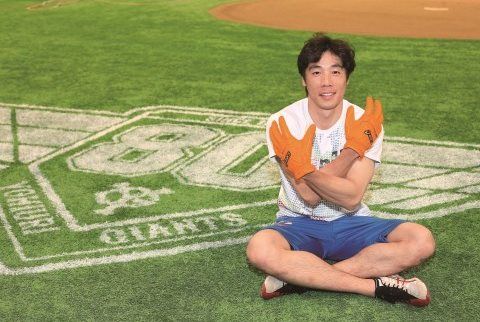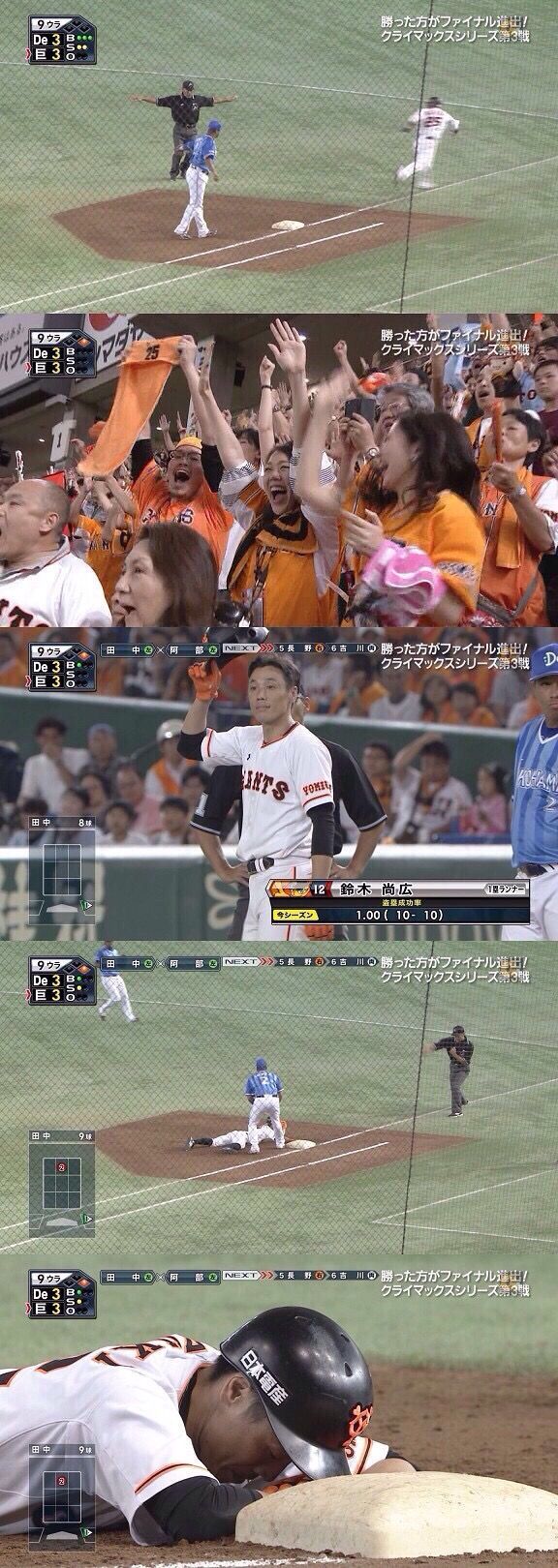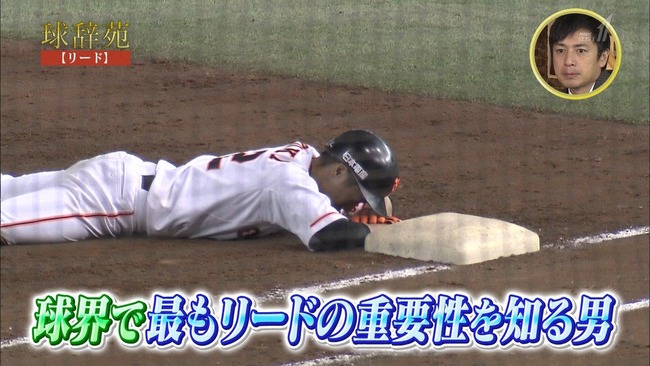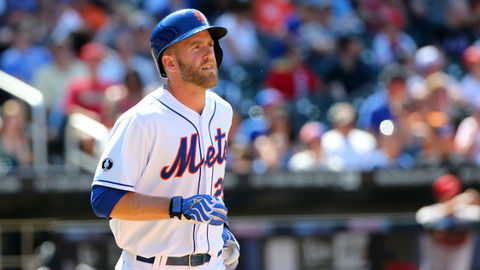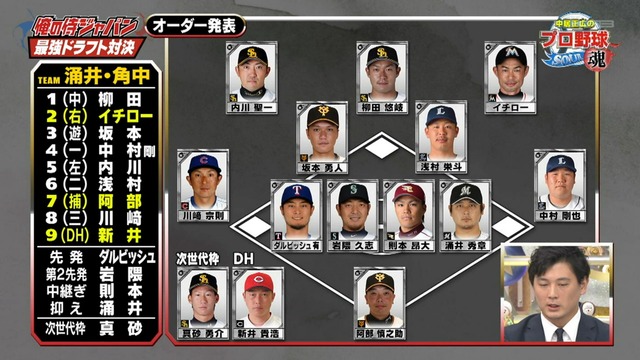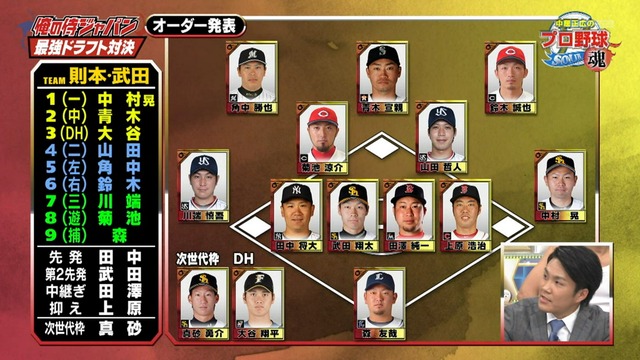管理人氏の「重い球の正体」説を乱暴に要約すれば、「重い球軽い球は存在しない。重い球というのは、単に打つ際の打者のミスショット、受ける際の捕球者のミス捕球である」という単純なものだが、ここに書かれた部分はそれとは別の、大リーグ人の証言部分だけだ。
01 EVERY OFFICIAL MAJOR LEAGUE baseball weighs between 5 and 5.2 ounces. So how come it feels like catching a feather when some pitchers throw it, and a brick when others throw it? And why do batters feel as if they're hitting a bowling ball when they connect against certain pitchers' deliveries?
メジャーの公式球はすべて、5から5.2オンスの重さと決められている。 なのに何故キャッチャーにとって、あるピッチャーの球は羽根のように、またあるピッチャーの球はまるでレンガを受けているかのように感じられるのか。そして打者はなぜ、ある投手の球を、ボーリングの球のように感じるのだろうか。02 Physicists may say there's no such thing as a "heavy" ball if they all weigh the same. But those experts never caught Mike Flanagan or Kevin Brown or Brandon Webb, never swung a bat against Tim Hudson or Kevin Gryboski.
物理学者は、重量が同じなら「重い」ボールなんてものは存在しないと言うかもしれない。 しかし、彼らはマイク・フラナガンやケビン・ブラウンやブランドン・ウェブの球を受けたこともなく、ティム・ハドソンやケビン・グリボスキーの球を打った経験もないのである。03 Most players, when asked why some pitchers throw beebees and others shot puts, respond like Phillies pitching coach Joe Kerrigan: "I've been catching pitchers for more than 20 years. Don't ask me why, but it's so."
ある投手は BB 弾(プラスチック製で軽い)を投げ、ある投手は砲丸を投げる。何故なのか。大抵のプレーヤーはフィリーズの投手コーチ、ジョー・ケリガンと同じように答える。「オレは20年以上キャッチャーをやった。Don't ask me why, 理由なんか知らない。but it's so. とにかく、そうなんだ」04 But some, especially catchers, offer a few explanations for the phenomenon. First, it has nothing to do with speed. A two-seam or four-seam fast ball has a lot of backspin; it doesn't pound the hand that's catching it. That's why the likes of Randy Johnson, Curt Schilling, Bob Welch, Jim Palmer, Catfish Hunter and Ron Guidry can and could throw 90-plus feathers.
しかし、中には現象をもう少し解説してくれる者(特にキャッチャー)もいる。 まず、それは球速とは無関係だ。 ツーシームまたはフォーシームの速球には強いバックスピンがかかっていて、それはキャッチャーの手を強打することはない。ランディ・ジョンソン、カート・シリング、ボブ・ウェルチ、ジム・パーマー、キャットフィッシュ・ハンター、ロン・ギドリーなんかはそうやって90マイル(145km)超の、羽根のような快速球を投げる。(フェザーには「空気抵抗が小さい」というニュアンスもあるのかも)05 It's the sinker that's usually the culprit. According to one-time Giants catcher and former Arizona manager Bob Brenly, "A sinker is the heaviest ball, especially if it
breaks late." You don't catch it cleanly in the pocket, but lower, and it wobbles and vibrates all the way up your arm. It does the same to a batter who makes contact with it.
ジャイアンツの元捕手でダイアモンドバックスの前監督ボブ・ブレンリーによれば、キャッチャーにとって最も厄介な球はシンカーである。 「シンカーこそ最も重い球だ。鋭く曲がる(breaks late)ヤツが特に。スポット(pocket)できちんと捕るつもりが、それより下(つまり親指側?)で捕る羽目になる。球は振動して、ミットを伝って腕までビリビリ来る。インパクトの瞬間のバッターにとっても同様だ」06 A sinker that
breaks earlier is easier to track and makes a louder crack in the mitt or when a bat hits it. A straight four-seam fastball has a pure rotation and is easy to track and catch. That's the key for a catcher. It's easier to line up no matter how fast it's thrown. That's what makes it feel lighter."
シンカーでも、ドローンと曲がる(breaks earlier)のは目で追いやすく、ミットに収まるとき(またはバットに当たるとき)に大きな音を出す(makes a louder crack)。フォーシームの真直ぐは回転が素直(has a pure rotation)で追いやすく、捕りやすい。キャッチャーにとってはそこがカギで、どんなに速くても捕りやすさのぶんだけ軽く感じる」07 Cardinals pitching coach Dave Duncan maintains that a sinker is the only kind of heavy pitch. Former Dodgers catcher Mike Scioscia agreed but went further. "When a catcher gets handcuffed, when a sinker doesn't drop the same amount or at the same angle every time, and you don't catch it fight, you feel it. It's part arm action, part delivery, the kind of spin. You can't teach a pitcher to throw a heavy ball."
カージナルスの投手コーチ、デイブ・ダンカンは、シンカーこそが唯一の重い球だと主張する。ドジャーズの前キャッチャー、マイク・ソーシアはこの見解に同意し、さらにこう言う(went further)。「キャッチャーの腕の自由が奪われてしまう(gets handcuffed)とき、つまりシンカーの落差や落ちる角度が一球一球違うときに、思い知ることになる(and you don't catch it fight, you feel it. ここの訳はぜんぜん自信なし)。それは腕の動き、delivery(「投げ方」あるいは「球離れ」)、回転とかで決まる。重い球の投げ方をピッチャーに教えることはできない」◆ ◆
08 But Phillies catcher Mike Lieberthal said even a four-seamer can feel heavy if it has a lot of movement. "When it's hard to catch cleanly it reverberates in the mitt, and that's what makes it feel heavy."
しかしフィリーズのキャッチャー、マイク・リーバーサルは、4シームファーストボールであっても、よく動くボールは重く感じる、と言う。「きれいに捕れない(hard to catch cleanly)球は、ミットを通して手に衝撃が来る。それが重いって感じを生むんだ」(よく動くなら4シームファーストボールと呼べないんじゃないか、と思うが、そうでもないのかも知れない)09 Where catchers feel it most is on the thumb. Ray Fosse, who caught Oakland's 1973-1974 world champions, called Catfish Hunter and Ken Holtzman a breeze to catch. Not Blue.
キャッチャーが球の重さを一番感じる部位は親指だ。1973-74年にオークランドでワールドチャンピオンに輝いたキャッチャー 、レイ・フォシーは言う。キャットフィッシュ・ハンターやケン・ホルツマン の球を捕るのは楽な仕事(breeze to catch)だが、ヴァイダ・ブルーは違う(Hunter、Holtzman、Vida Blueは、ともに1974年 Athletics在籍の投手)と。10 "After catching Blue my hand was swollen so I could hardly hold a bat. With a sinkerball pitcher, if you have to turn the mitt thumb down to stop a pitch, the ball comes down and the thumb takes the worst healing."
「ブルーの球を捕ると、バットを握れないくらいに手が腫れ上がる。シンカーの場合、球を止めるために親指を下にミットをひねるだろ。そこに落ちてきて、親指が最悪のダメージ(worst healing)を受ける」11 Longtime Pirates and Orioles pitching coach Ray Miller recalled Pittsburgh right-hander Bob Walk. "His pitch Would get about 12 feet from the plate and it would wiggle, shudder a little--you could see it. The catcher saw it and got set to catch it where he thought it would come in and it would cut back and wham him on the thumb."
パイレーツとオリオールズで長年コーチを務めたレイ・ミラーはピッツバーグの右腕、ボブ・ウォークの名を挙げた。「ヤツの球はベースの12フィート(3.7m)手前で小刻みに揺れ始める。見ればわかるよ。キャッチャーはそれを見て、ここに来る、と思ったところにミットを出す、球はカットバック(キュンっと予想以上にブレーキがかかる、くらいの意味か?)して親指にズガンと来る」12 For all of Rick Dempsey's 21-year major league career, the Orioles coach singled out Mike Flanagan as the toughest pitcher to catch.
オリオールズのコーチであるリック・デンプシーはメジャーでの21年間のキャリアを通じて、捕るのが最もタフなピッチャーとしてマイク・フラナガンを選んだ。13 "It was that late, last split second break and it was not always the same. Sometimes I'd have to twist the mitt thumb down to catch it and it would jar your thumb. He once broke a ligament in my index finger, too." Nor did it always stop at the thumb. "On a cold day it hurt right up to your jaw," added Orioles coach Elrod Hendricks.
「最後の最後でキュッと曲がる。しかも一球ごとに違う。時にはミットの親指を下にひねらなきゃならない。親指が軋む。オレは人差し指の靭帯を切ったこともある」。被害は親指にとどまらないのだ。「寒い日には顎まで痛む」と、オリオールズのコーチ、エルロッド・ヘンドリックスは付け加えた。14 Dave Duncan recalled that "it was harder to catch that late-breaking drop with the round mitts used in the old days, but you'll still see catchers icing their thumb after a game when their pitcher has been throwing shot puts."
デイヴ・ダンカンは回想する。「昔はミットが丸っこくて、キュッと落ちる球(late-breaking drop)は今より以上に捕りにくかった。だけど今でも、砲丸投げみたいな球を受けた試合の後、キャッチャーが親指を氷で冷やすのを見かけるだろ?」◆ ◆
15 So, if it's the break of a sinker that makes it heavy, what about the splitter, which also breaks late? Mike Scioscia called Bruce Sutter's splitter "nasty. It acted like a left-hander's curve, but it wasn't as heavy as a sinker."
では、シンカーの変化が重さの原因であるとすれば、シンカー同様に打者の手前で急激に落ちる球、フォークボール(splitter)はどうなのか。マイク・ソーシア(捕手/ドジャース/1980-92) は、 ブルース・スーターのフォークを「イヤらしい(nasty/たちが悪い/不快)」と言う。「左投手のカーブに近い感じなんだが、シンカーほど重くはなかった」16 Athletics catcher Adam Melhuse pointed out that a splitter has less rotation. And, besides, "a catcher seldom catches a splitter. Eighty percent of the time a batter swings over it and misses and it's down in the dirt, so the catcher drops down to trap or block it. If it stays up it's usually hit."
アスレチックスの捕手、アダム・メルヒューズは、フォークの回転の少なさを指摘し、 さらに、「キャッチャーはめったにフォークを捕ることはない」と言う。「100回のうち80回はバッターは球の上を空振り(あるいは球の上ツラをミスショット?)し、球は地面に突き刺さる。キャッチャーは捕るかブロックするかのために這いつくばる。そうでなければ、ふつう、ヒットになるんだ」(キャッチャーはめったにフォークを捕ることはない。うーん、そうかあ? アメリカンジョークかも知れない)◆ ◆
17 Reds hitting coach Chris Chambliss had a different theory. "A fingertip delivery, like Bob Welch's, will produce a lighter ball. Jim Bibby had huge hands. He held the ball so far back in his hand you couldn't see it. Nolan Ryan did, too. How deep they hold the ball when they throw it makes it heavy."
レッズの打撃コーチ、クリス・シャンブリスは別の原理を挙げた。「ボブ・ウェルチみたいな、指先でピュッと投げるやり方(fingertip delivery「指先投法」)だと軽い球になる。ジム・ビビーは手がデカかった。あんまり深く握るので球が見えないぐらいだった。 ノーラン・ライアンもそうだ。投げる時にボールをどれくらい深く握るかによって、球の重さが決まるんだ」◆ ◆
18 So who do past and present catchers regard as the purveyors of the heaviest bone-jarring pitches?
それではかつての、あるいは現役のキャッチャーたちは、最も骨を軋ませる重い球の提供者として誰を挙げるだろうか。Mike Scioscia:Tommy John, Orel Hershiser, the young Alejandro Pena.
マイク・ソーシアはトミー・ジョン、オーレル・ハーシュハイザー、アレハンドロ・ペーニャを。Dave Duncan:Former A's Blue Moon Odom and Bobby Locker; present Cardinals Chris Carpenter and Jason Marquis.
デイブ・ダンカンは、アスレチックスに所属していたブルー・ムーン・オドムとボビー・ロッカー、そして現在カージナルスのクリス・カーペンターとジェイソン・マーキスを。Bob Brenly:Greg Minton, Kevin Brown, Brandon Webb
ボブ・ブレンリーはグレッグ・ミントン、ケビン・ブラウン、ブランドン・ウェブを。Damian Miller:Kerry Wood, Carlos Zambrano.
ダミアン・ミラーはケリー・ウッド、カルロス・ザンブラーノを。Bob Geren, A's bullpen coach, one-time Yankees catcher:Tim Leary.
アスレチックスのブルペンコーチ(かつてヤンキースのキャッチャー)のボブ・ゲレンはティム・レアリーを。Elrod Hendricks:Gene Brabender.
エルロッド・ヘンドリックスは、ジーン・ブラベンダーを、Rick Dempsey:Mike Flanagan
リック・デンプシーはマイク・フラナガンを、Sammy Snider, who has caught hundreds of pitchers in his 25 years as the Orioles bullpen catcher:Mike Timlin, Jason Grimsley.
オリオールズのブルペンキャッチャーとして、25年間にわたって何百人もの投手の球を受け続けて来たサミー・スナイダーはマイク・ティムリンとジェイソン・グリンズリーを。Reds bench coach, former Yankees catcher Jerry Narron:Goose Gossage
--"Not a sinker, but heavy heat."
レッズのベンチコーチで、かつてヤンキースのキャッチャーだったジェリー・ナロンは、グース・ゴセージを。
--「ありゃシンカーなんてもんじゃない。HEAVY HEATだ」
(HEAVY HEATとは何か。『もうね、火の玉がね、燃えながらズドーンって飛んで来るようなもんですよ。ええ、それもねえ、とにっかく重たいんですよズドーンって。たまったもんじゃないですよ』とかそんな感じか)AJ. Pierzynski:Jason Schmidt, Jim Brower.
AJ・ピアジンスキーは、ジェイソン・シュミレットとジム・ブラウワーを。Jason LaRue:Reds closer Danny Graves.
ジェイソン・ラルーはレッズのクローザー、ダニー・グレイブスを。Javy Lopez:Atlanta reliever Kevin Gryboski.
ジャビー・ロペスはアトランタのリリーフ投手、ケビン・グリボスキーを挙げた。◆ ◆
19 The heavy ball experience is not confined to the major leagues. Adam Melhuse first heard the term in AAA in 1997. "I'm catching a veteran pitcher and he's not throwing as hard as some of the other pitchers, but he's pounding my hand like they never did. I asked somebody about it and was told, 'Yeah, he throws a heavy ball.' It sounds strange. It's the same ball, but it feels, well, heavy is the best way to describe it."
ボールが重く感じられるという現象は、メジャーリーグだけに存在するわけではない。アダム・メルヒューズは1997年に3Aで初めて「HEAVY BALL」という言葉を聞いた。「あるベテランの球を受けていて、彼はそんなにハードに投げてなかったんだけど、他のピッチャーではあり得ないくらい手にズンッと来たんだ。そのことを人に訊いたら言われたよ、『Yeah, he throws a heavy ball』って。妙な言葉だと思ったね、同じボールだぜ? だけどたしかにあの感じは『重い』って表現がぴったりだ」20 Bob Geren first heard the term "light ball" in AA in the 1980s. "We had a young pitcher from the Dominican. The manager told me he threw 100 miles an hour but it'll be a light ball. I didn't know what that meant. But he was right. Like a lot of light ball pitchers, he gave up a ton of home runs, but he was easy to catch."
ボブ・ゲレンは1980年代の2Aで「LIGHT BALL」という言葉をはじめて聞いた。「ドミニカ出身の若いピッチャーがいて、彼のことを監督が『時速100マイル出るが球が軽い』と言った。何のことだかオレにはわからなかったけど、しかし、監督が正しかった。多くの球質の軽いピッチャー(light ball pitcher)と同様、彼は山ほどのホームラン(a ton of home runs)を打たれたし、それに、捕りやすかった」21 Mike Scioscia recalled Roy Campanella talking about pitchers who threw a heavy ball. But the terminology goes back much further. Jack Lapp, catcher-for the Philadelphia Athletics 1910-1914 three-time world champions, said Chief Bender "threw a ball that was so light it felt almost like a tennis ball, while Jack Coombs was like catching a brick."
マイク・ソーシアは、ロイ・カンパネッラから聞いた、ヘビーボールを投げたというピッチャーに関して思い出してくれた。しかし、ヘビーボールという語はさらに以前から存在する。ジャック・ラップ(1910年から1914年の間三度に渡りワールドチャンピオンの座に輝いたフィラデルフィア・アスレチックスのキャッチャー)は言った。「チーフ・ベンダーはテニスボールのような軽い球を投げた。一方ジャック・クーンズの球は、まるでレンガを受けてるみたいだった」(フィラデルフィア・アスレチックスはオークランド・アスレチックスの前身の前身)◆ ◆
22 Hitters have their own nominees for bowling ball pitchers, whose deliveries reverberate through their arms and bodies when they make contact. Most often mentioned are Kevin Brown and Brandon Webb. Others, past and present:
打者たちは、インパクトの瞬間に腕から身体へと衝撃を走らせる「ボーリング・ボール・ピッチャー」として、また別の(「また別の」というのは打者独自の、という意味で、own の意訳のつもりなんだけど、特にそういう意味じゃないような気もする)候補を挙げる。たいてい言及されるのはケビン・ブラウンとブランドン・ウェブだ。それ以外には(過去、現在にわたって)、Mike Scioscia: Kent Tekulve.
マイク・ソーシアはケント・テカルビーを、Adam Dunn: Brad Penny,
アダム・ダンはブラッド・ペニーを、Sean Casey: Zach Day and Kevin Gryboski
ショーン・ケーシーはザック・デイとケビン・グリボスキーを、Javy Lopez: Tim Hudson
ハビー・ロペスはティム・ハドソンを、Chris Chambliss: Jim Bibby
クリス・シャンブリスはジム・ビビーを、Mark Grace: John Franco.
マーク・グレースはジョン・フランコを、23 Rafael Palmeiro: Mariano Rivera, not because he throws a sinker. "His cutter is like hitting a steel ball," the left-handed batting Palmeiro said. Others likened Rivera's cutter to a "buzz saw" coming in to a lefty swinger.
ラファエル・パルメイロ(左打ち)はマリアーノ・リベラ(右投げ)の名を挙げた。シンカーを投げるからではない。「ヤツのカッターは鋼球を打っているようだ」と言う。 また他の者も、左打者のインコースをえぐるリベラのカットボールを、電気のこぎりになぞらえた。24 Barry Larkin took a slow, thoughtful approach to the question before answering. At first he couldn't think of any pitchers during his stellar 19 years with the Reds who had given him that bowling ball effect. Told that Mark Grace had singled out John Franco, he said, "Not to me"
What about Brad Penny? "Now that you mention him, I agree. He throws a cut fastball that not only breaks in but down."
バリー・ラーキンは長時間考え込んだ。彼の輝かしいキャリアは19年間に及ぶが、その間「ボーリング・ボール効果」を彼に与えた投手を、はじめ、ひとりも思い付かなかった。マーク・グレースがジョン・フランコを挙げたと聞いても、「私にとっては違う」と言った。
ブラッド・ペニー(右投げ)はどうだろう? 「彼についてなら同感だ。彼のカット・ファストボールはインコースに曲がって来る(breaks in)だけじゃなく、落ちる」(右投手のカッターが右打者のインコースに曲がって来る、って、おかしいよな。とすると「breaks in」は「インコースに曲がって来る」ではないのかも)25 Larkin didn't think the pitcher alone was the cause of the heavy ball feeling. "It's a combination of the hitter--where he makes contact--and the pitcher. A sinker is harder to get just the right contact on the sweet spot. I'm a contact hitter, not a big swinger.
Mark Mulder threw me a splitter on June 7 that broke my bat. I hit it on the end of the bat. I went back to the bench and said, 'That was a heavy pitch.' The other guys scoffed. 'Mulder?' they said in disbelief. But that, to me, was a heavy pitch."
ラーキンは、投球を重いと感じる原因はピッチャーだけにあるわけではない、と考えている。「それは、バッターとピッチャーの組み合わせの問題だ。シンカーは芯で捉えるのがむずかしい。オレは大振りするタイプじゃなく、こつこつ当てるバッターなんだけどね。
6月7日、オレはマーク・マルダーのフォークでバットを折られた。end of the bat(グリップエンドという言葉があるのでバットの根っこのことだと思うが、先っぽかも)に当たったんだ。ベンチに戻って、重い球だった、と言ったら他の奴は笑った。マルダーの球が重いだって? 信じられないって調子だった。だけど、オレにとってそれは重い球だったんだ」◆ ◆
26 Adding to the mystery is the fact--or the illusion--that position players also throw a heavy or light ball. Many players mentioned that just playing catch, some guys throw a rock. They're not trying to throw sinkers or cutters, so what causes it?
さらに奇妙なのは次のような事実(或いは錯覚)だ。野手(position players)の投げる球もまた、重かったり軽かったりするというのである。多くのプレーヤーが、ただのキャッチボールで岩のような球を投げる選手の存在に言及した。野手はシンカーだのカッターだのは投げないのに、一体何がそれを引き起こすのだろうか。27 Maybe it's something about their arm action. Bob Brenly, who recalled Giants shortstop Mike Benjamin throwing a heavy ball to the plate, said, "If an infielder gets his hand a little on the side, the throw dips and vibrates in the glove when caught."
多分、それは腕の動きに関係している。ボブ・ブレンリー は、ジャイアンツのショート、マイク・ベンジャミンの本塁送球が重かった、と思い出した。「内野手がサイド気味に投げると送球が沈んで、捕る時にビリビリ来るんだ」(『野球術』上巻 p.53によると、単に「plate」と言った場合、通常はホームプレートを指す。投手板(ピッチャーズプレート)は「rubber」と呼ぶ。ちなみに「ホームベース」は和製英語、だそうだ)28 J.T. Snow thought that sidearm throws tend to sink, making them feel heavier.
J.T. スノウはこう考える。「サイドハンドで投げた球は落ちやすい。それが重い感じを生むんじゃないか」29 Mark Grace disagreed. "Shawon Dunston and Matt Williams both threw over the top. Williams threw a light ball Dunston had a cannon for an arm. He threw harder than Nolan Ryan, Robb Nen or Ron Dibble. He could have been a closer but he'd have killed people."
マーク・グレース(カブス→ダイヤモンドバックス、一塁手)は違う意見だ。「ショーン・ダンストン(ショート)とマット・ウィリアムズ(ショート、またはサード)は、ともに真上から(オーバーハンドで)投げた。ウィリアムズは軽い球を、ダンストンは大砲のような球を投げた。彼はノーラン・ライアンやロブ・ネン、ロン・ディビーよりもハードな球を投げた。「ヤツならクローザーだってできたろう。ただし人を殺す羽目になったかも知れないが」30 "His ball moved, and that motion made it feel heavy. You couldn't catch it square. It vibrated in your glove and up your arm."
「ヤツのボールは動いた。その動きが重い感じを生むんだ。アレは正面で捕ることができない。グローブだけじゃなく、腕まで痺れる」(正面で捕ることができないムービング・ボールを投げるショート。本当なのか。ずいぶん迷惑と言うか、内野手には向いてないような気がするんだが)31 Without trying to explain it, players and coaches singled out Reds catcher Jason LaRue, Alex Rodriguez and A's outfielder Bobby Kielty as brick-throwing position players today.
理由はともかく、多くのプレーヤーとコーチは現在の「球質の重い野手(brick-throwing position players)」として次の選手を挙げる。レッズの捕手ジェイソン・ラルー。アレックス・ロドリゲス。アスレチックスの外野手ボビー・キールティ。32 That's not new, either Home Run Baker threw bricks, Eddie Collins, feathers. Maybe they can't explain it, but don't try to tell a sore-thumbed catcher or a stung-hands batter that there's no such thing as a heavy ball.
それは現在だけに限った話ではない。 ホームランベイカーはレンガのような、エディー・コリンズは羽根のような球を投げたのだ。たぶん彼らはそれを説明できない。しかし、だからといって、親指を腫らしたキャッチャーや、手を傷めたバッターに向かって、重いボールなんてものは存在しない、なんて言うのはやめた方がいい。COPYRIGHT 2004 Century Publishing
COPYRIGHT 2004 Gale Group


